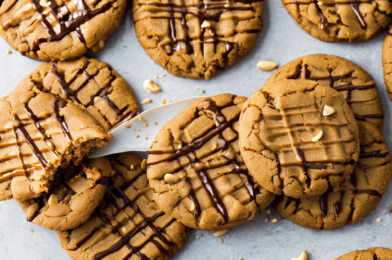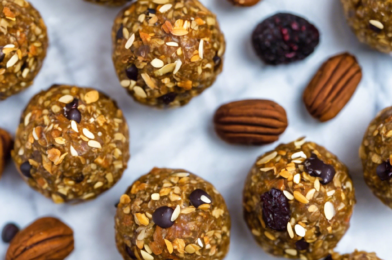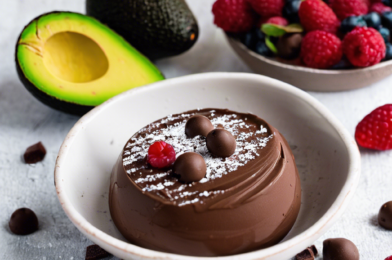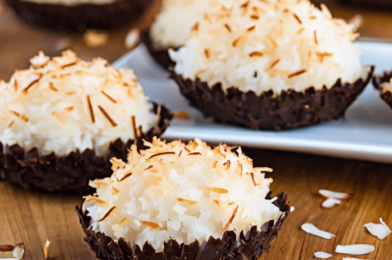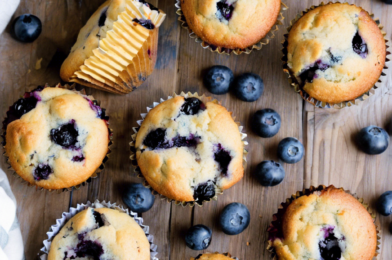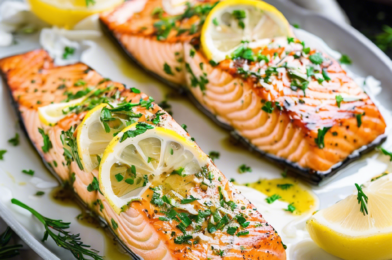Have you ever stumbled upon a recipe that instantly becomes a family favorite? That’s exactly how I felt when I discovered the delightful world of flourless peanut butter cookies. As a self-proclaimed cookie enthusiast, I was drawn to this recipe not only for its simplicity but also for its promise of rich peanut butter flavor packed into every bite. These cookies quickly became a staple in my household, winning over even the most skeptical eaters with their chewy texture and intense nutty taste. My family couldn’t get enough of them, and now, I can’t wait to share this gem with you.
Ingredients
To begin your journey into the world of flourless peanut butter cookies, you’ll need a handful of simple ingredients that you likely already have in your kitchen. This recipe is a testament to the fact that deliciousness doesn’t have to be complicated:
- 1 cup of creamy or chunky peanut butter
- 1 cup of granulated sugar
- 1 large egg
- 1 teaspoon of vanilla extract
- 1/2 teaspoon of baking soda
- A pinch of salt (optional)
These ingredients come together to create a magical cookie dough that requires no flour, making it perfect for those following a gluten-free diet or anyone looking to cut back on refined carbohydrates. The simplicity of this ingredient list is part of what makes these cookies so appealing, allowing the peanut butter to truly shine.
Instructions
Making flourless peanut butter cookies is as easy as it gets. Here’s how you can whip up a batch in no time:
- Preheat your oven: Start by preheating your oven to 350°F (175°C). Line a baking sheet with parchment paper for easy cleanup.
- Mix the ingredients: In a medium bowl, combine the peanut butter, sugar, egg, vanilla extract, baking soda, and salt if using. Stir until the mixture is smooth and well combined.
- Shape the cookies: Using a tablespoon or cookie scoop, portion out the dough onto the prepared baking sheet, leaving about 2 inches of space between each cookie. Use a fork to gently press down on each ball of dough, creating a crisscross pattern.
- Bake: Place the baking sheet in the preheated oven and bake for 10-12 minutes or until the edges are golden brown. Keep an eye on them to ensure they don’t overbake.
- Cool: Remove the cookies from the oven and allow them to cool on the baking sheet for a few minutes before transferring them to a wire rack to cool completely.
And there you have it! In just a few simple steps, you’ve created a batch of irresistible flourless peanut butter cookies that are sure to disappear quickly.
Nutrition Facts
When indulging in these flourless peanut butter cookies, it’s helpful to know what you’re consuming. This recipe yields approximately 12 cookies, with each cookie containing around 150 calories. Keep in mind that these numbers can vary slightly based on the specific brands of peanut butter and sugar you use. However, the nutritional value remains relatively consistent, offering a tasty treat that can fit into a balanced diet when enjoyed in moderation.
Preparation Time
One of the many advantages of this recipe is its quick preparation time. From start to finish, you can have a batch of cookies ready in just about 20 minutes. With only a few minutes needed for mixing the ingredients and forming the cookies, followed by a short baking time, these cookies are perfect for those moments when you crave something sweet but don’t want to spend hours in the kitchen. The simplicity and speed of this recipe make it an ideal choice for last-minute gatherings or a spontaneous treat.
How to Serve
Flourless peanut butter cookies are incredibly versatile when it comes to serving. Here are a few ways you can enjoy them:
- Classic Style: Enjoy them on their own as a satisfying snack or dessert.
- With Ice Cream: Serve them warm with a scoop of vanilla ice cream for a decadent treat.
- Sandwich Cookies: Spread a layer of your favorite jam or chocolate spread between two cookies for a delicious sandwich.
- Crumbled Topping: Crumble the cookies over yogurt or oatmeal for added texture and flavor.
- Gift-Worthy: Package them in a decorative tin or box for a thoughtful homemade gift.
Additional Tips
To elevate your flourless peanut butter cookie experience, consider these tips:
- Choose Quality Peanut Butter: Opt for natural peanut butter without added sugars or oils for the best flavor and texture.
- Chill the Dough: For thicker cookies, chill the dough in the refrigerator for 30 minutes before baking.
- Experiment with Add-ins: Try adding chocolate chips, chopped nuts, or dried fruit to the dough for extra flavor.
- Use a Cookie Scoop: A cookie scoop ensures uniform cookies, which bake more evenly.
- Store Properly: Keep cookies in an airtight container at room temperature for up to a week, or freeze them for longer storage.
FAQ Section
Here are some common questions about flourless peanut butter cookies:
1. Can I use a sugar substitute in this recipe? Yes, you can use sugar substitutes like erythritol or stevia, but keep in mind that this might affect the texture and taste slightly.
2. Are these cookies suitable for someone with a peanut allergy? Unfortunately, this recipe is not suitable for those with peanut allergies. Consider using a different nut or seed butter as an alternative.
3. Can I make these cookies vegan? To make these cookies vegan, replace the egg with a flax egg (1 tablespoon of flaxseed meal mixed with 2.5 tablespoons of water) and ensure your sugar is vegan-friendly.
4. Why are my cookies falling apart? If your cookies are too crumbly, it may be due to overbaking. Ensure they are just golden around the edges and allow them to cool before handling.
5. How can I make the cookies chewier? For chewier cookies, slightly underbake them or add a tablespoon of honey or molasses to the dough for added moisture.
With this comprehensive guide, you’re well-equipped to make and enjoy the perfect batch of flourless peanut butter cookies. Happy baking!
